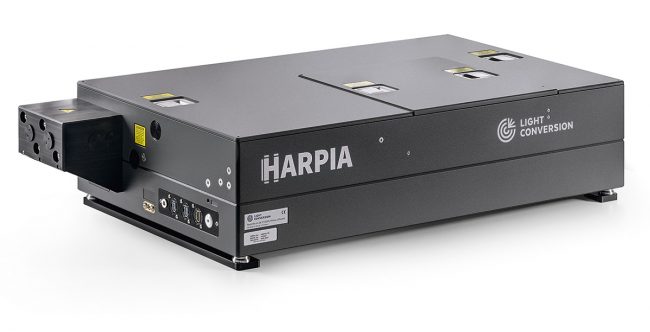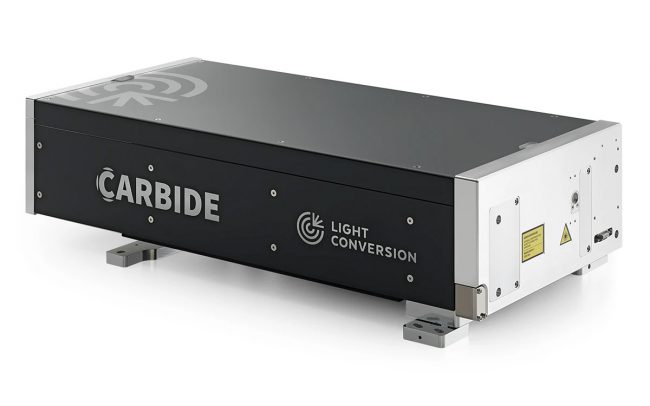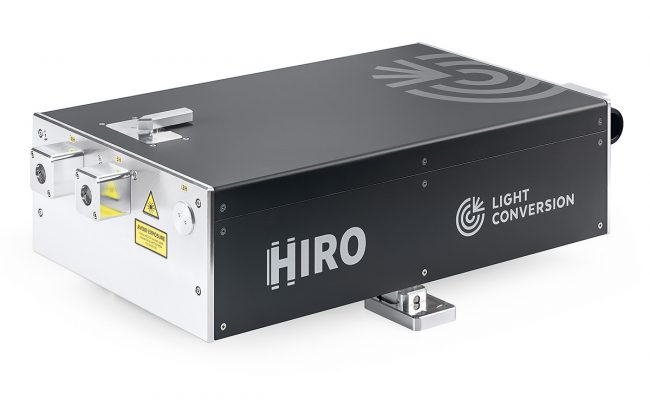Transient grating spectroscopy (TGS), also known as a laser-induced transient grating (LITG) technique, is a non-destructive pump-probe technique that utilizes laser interference instead of a single laser beam to excite the sample for evaluation of the exciton lifetime and diffusion coefficient.
In this case, two interfering laser beams create a standing wave on the surface of the sample – a transient grating. The depth of absorption modulation is measured by a delayed probe beam, diffracting from the grating. The modulation depth decays as quasiparticles propagate along the excitation density gradient. The rate of decay corresponds to the diffusion of the quasiparticles. If the grating period is varied, the technique provides detailed information on the dynamics of propagation.
Moreover, LITG enables direction-dependent measurements of exciton diffusion in anisotropic materials. It is proven to be fully applicable for studying exciton and charge dynamics in crystalline media, such as bifluorene single crystals. The knowledge of the directionality of exciton diffusion is essential for the optimal crystal orientation in various devices, e.g., crystal-based organic lasers.
LITG can be realized using HARPIA-TG transient grating spectrometer pumped by PHAROS and CARBIDE femtosecond lasers. Light Conversion has managed to adapt its high-level mechanical and optical engineering solutions gathered over almost 30 years of experience in the field of lasers and laser systems to offer a simple, fully automated, and user-friendly transient grating spectroscopy system.
- 几分钟内的载流子扩散系数!
- 无创测量技术
- 全自动计算机控制
- 光栅周期的连续设置
- 灵敏度低至 µJ/cm² 激励水平
- 先进的测量和分析软件
- 光致发光(PL)测量选项
- 100 fs – 20 ps 连续可调脉宽
- 最大单脉冲能量 4 mJ
- 最小脉宽输出 < 100 fs
- POD 和 BiBurst 功能
- 高达 5 次谐波或可调谐扩展
- CEP 稳定或重复频率锁定
- 热稳定性和密封设计
- 190 fs – 20 ps 连续可调脉宽
- 最大输出 1 mJ @ 120 W 或 2 mJ @ 80 W
- 单脉冲 – 2 MHz 重复频率
- POD 和 BiBurst 功能
- 高达 5 次谐波或可调谐扩展
- 风冷型号
- 紧凑的工业级设计
- 坚固的工业级机械设计
- 单箱式解决方案
- 可调谐或固定波长型号
- 即插即用、安装简洁、性能强大
- 市场上最紧凑的 OPA
Comparison of growth interruption and temperature variation impact on emission efficiency in blue InGaN/GaN MQWs
J. Mickevičius, K. Nomeika, M. Dmukauskas, A. Kadys, S. Nargelas, and R. Aleksiejūnas, Vacuum 183, 109871 (2021).
Direct observation of large electron–phonon interaction effect on phonon heat transport
J. Zhou, H. D. Shin, K. Chen, B. Song, R. A. Duncan, Q. Xu, A. A. Maznev, K. A. Nelson, and G. Chen, Nature Communications 1 (11) (2020).
Impact of Alloy-Disorder-Induced Localization on Hole Diffusion in Highly Excited c -Plane and m -Plane ( In , Ga ) N Quantum Wells
R. Aleksiejūnas, K. Nomeika, O. Kravcov, S. Nargelas, L. Kuritzky, C. Lynsky, S. Nakamura, C. Weisbuch, and J. S. Speck, Physical Review Applied 5 (14) (2020).
Extreme radiation resistance in InN
Y. Podlipskas, J. Jurkevičius, A. Kadys, M. Kolenda, V. Kovalevskij, D. Dobrovolskas, R. Aleksiejūnas, and G. Tamulaitis, Journal of Alloys and Compounds 789, 48-55 (2019).
Direct Auger recombination and density-dependent hole diffusion in InN
R. Aleksiejūnas, Y. Podlipskas, S. Nargelas, A. Kadys, M. Kolenda, K. Nomeika, J. Mickevičius, and G. Tamulaitis, Scientific Reports 1 (8) (2018).
Exciton diffusion in bifluorene single crystals studied by light induced transient grating technique
P. Baronas, P. Ščajev, V. Čerkasovas, G. Kreiza, P. Adomėnas, O. Adomėnienė, K. Kazlauskas, C. Adachi, and S. Juršėnas, Applied Physics Letters 3 (112), 033302 (2018).
Impact of carrier localization and diffusion on photoluminescence in highly excited cyan and green InGaN LED structures
K. Nomeika, R. Aleksiejūnas, S. Miasojedovas, R. Tomašiūnas, K. Jarašiūnas, I. Pietzonka, M. Strassburg, and H. J. Lugauer, Journal of Luminescence 188, 301-306 (2017).





